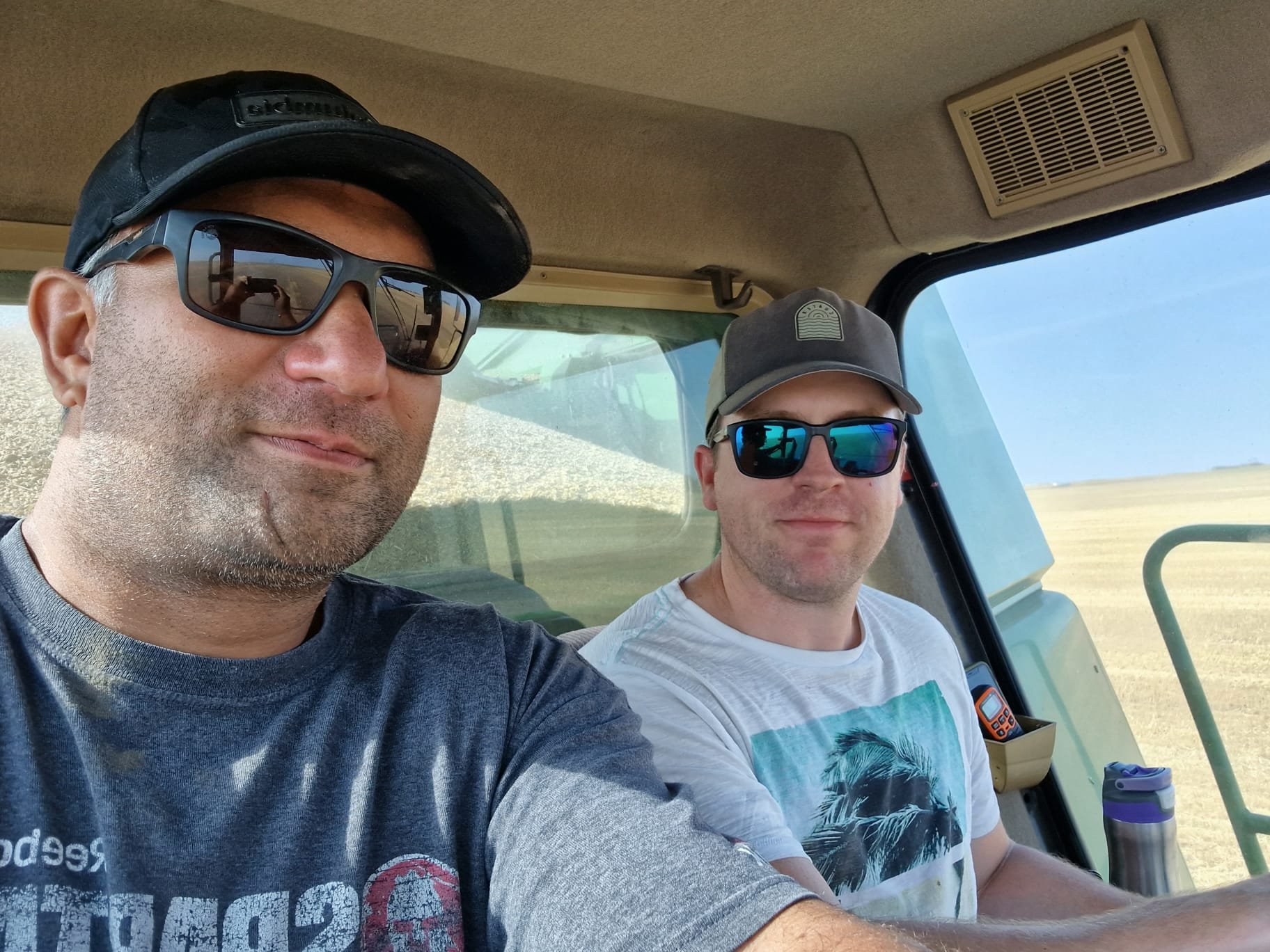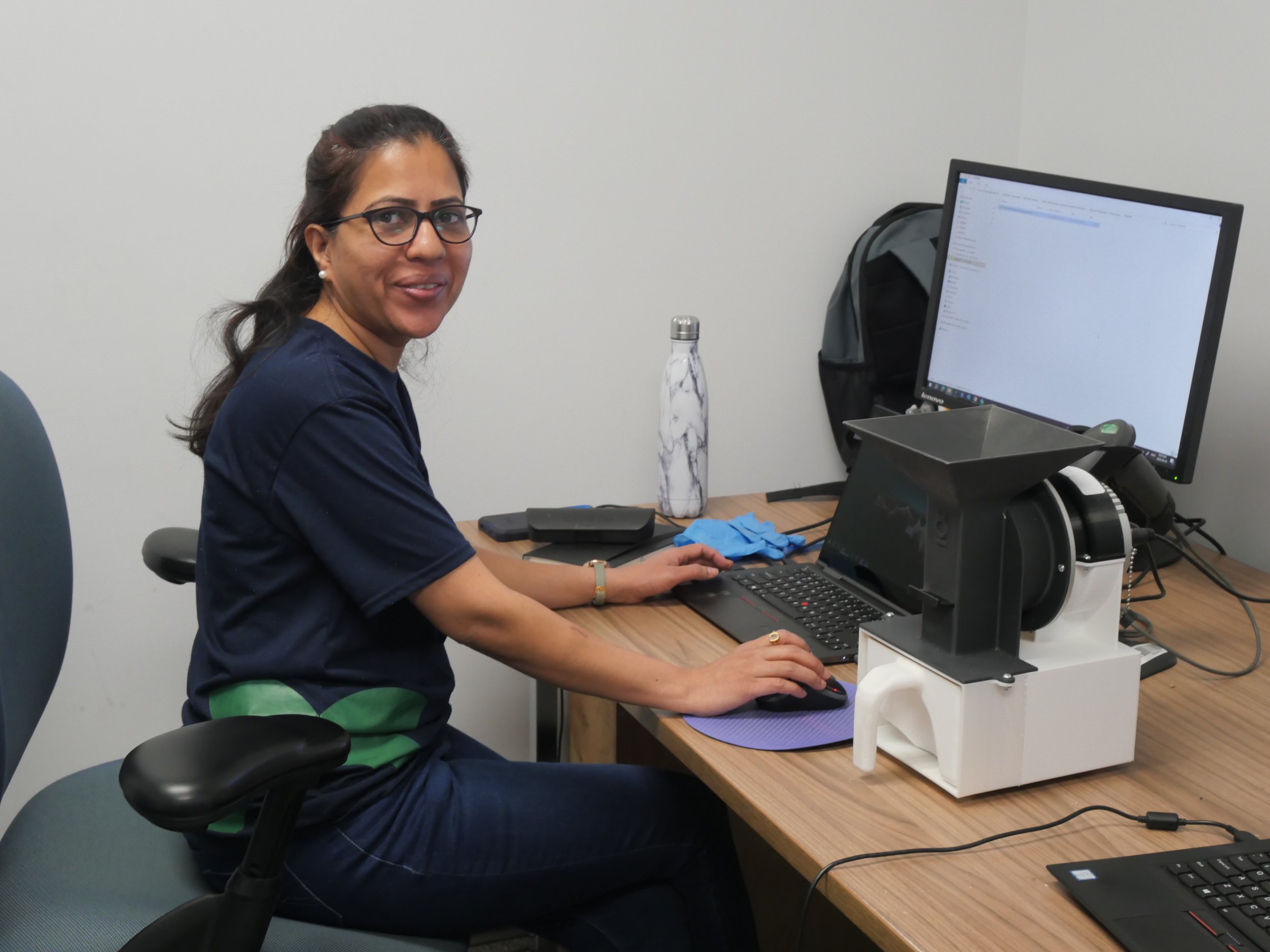Ground Truth Ag 101 – Our history with grain grading
Winter in Saskatchewan may not be the most auspicious of circumstances to found a tech company in a garage, but that’s exactly where Ground Truth Ag’s founder and Chief Executive Officer Kyle Folk and Chief Operating Officer Divyesh Patel found themselves working in January, 2022.
“We each had a laptop set up on a folding table and had strategically stacked our many bags of Canadian Hard Red Spring wheat so Kyle’s wife would still have enough room to park their car inside,” Divyesh recalls. “It’s hard to believe that was just over two years ago, especially considering where we are at now both with the development of our technology and as a company – we didn’t stay in that garage for long.”
Fast forward to 2024, Ground Truth Ag recently hosted an Innovation Saskatchewan funding announcement at their offices in Regina. During the event, Ground Truth Ag’s Senior Machine Learning Engineer Dr. Aamir Shah demonstrated the company’s automated grain graining benchtop prototype to media and officials in attendance.
“As one of the grant recipients in 2022, being asked to host was a big, celebratory moment for our whole team,” Divyesh explains. “We got to show off two years of intense collaboration and creative problem-solving across multiple disciplines to build out a new technology that much bigger and more established companies have attempted and failed to create.”
Originally, Ground Truth Ag envisioned developing a single product – the on-combine, high- throughput grain grading system that uses infrared spectroscopy and machine vision to provide real-time grade along with precision-location information to farmers. The company decided to add a second, benchtop product while they were engaged in their machine vision model development based on feedback from an agriculture sector partner.
“It made a lot of sense for us to do an intermediary product,” Divyesh explains. “We knew that developing it would help us build out our models for both versions of our product in a better way, and it would also help us get a product to market more quickly.”
Ground Truth Ag’s focus in the first year was trying to build a core team of leaders while ensuring the company would have the available resources to support their work. During this year, the company also leveraged relationships with educational institutions, researchers and students to help prove out concepts.
“As we were heading into field trials in August 2022, we had the first version of our near infrared spectroscopy system working, which is what we use for non-visual characteristics like moisture and protein, and we were starting to have some basic machine vision detection models as well,” Divyesh recalls.
“At this point, we were also discovering way more problems than solutions,” Divyesh explains. “This ended up being invaluable as it helped us draw a box around the problems we had to address and then identify what expertise we needed on our team to help us move forward. Our team was built from those learnings, and now includes experts in machine learning, analytical chemistry, grain grading, software and electrical and mechanical engineering.”
Challenges the team has solved has included everything from how to successfully deploy machine vision in a bulk grain setting such as a combine to finding hardware that is rugged, accurate and at a price point that will allow the technology to be deployed across the whole grain buying chain.
“Our 2023 field trials were a great validation of our work over the past year, demonstrating that our team has solved the machine vision challenges created by a high throughput setting like a combine – and no one else had been able to crack this,” Divyesh exclaims. “On the hardware side, our analytical chemist, Mariia Selivanova, really stuck with it through this challenge – she did a lot of research, connected with so many different suppliers and was able to find and recommend hardware that will meet our needs.”
The Ground Truth Ag team has since returned its full attention back to the benchtop version as they prepare the product for commercial manufacturing.
“Our team is small and so our work ends up being very cyclical,” Divyesh explains. “That’s also a positive as it also means our entire team is focused on the next piece of work in front of them and it’s all hands-on deck.”






